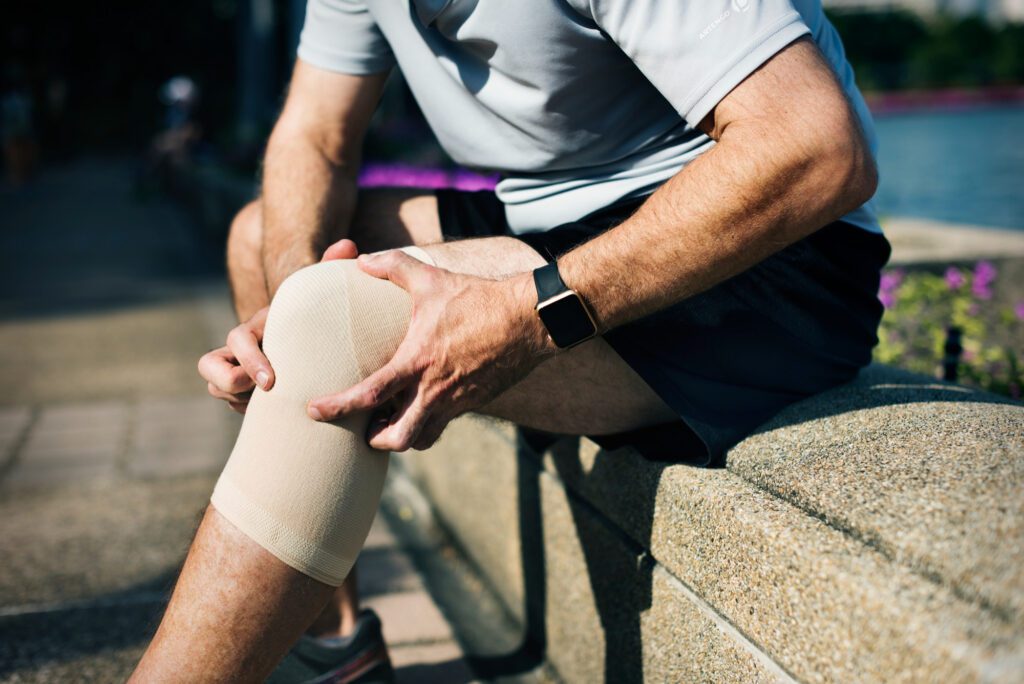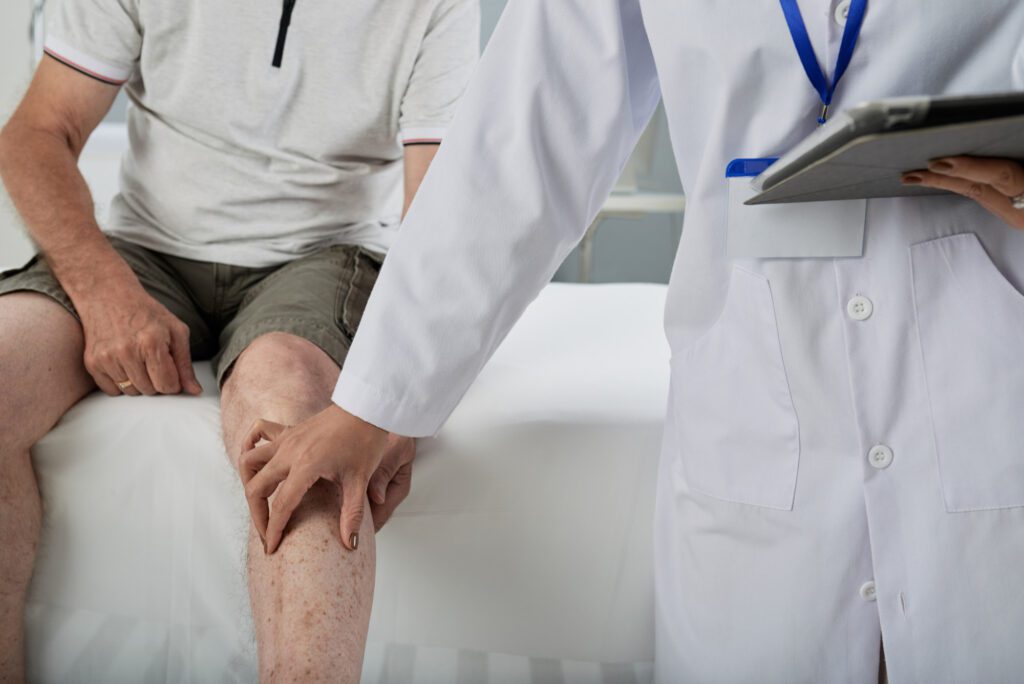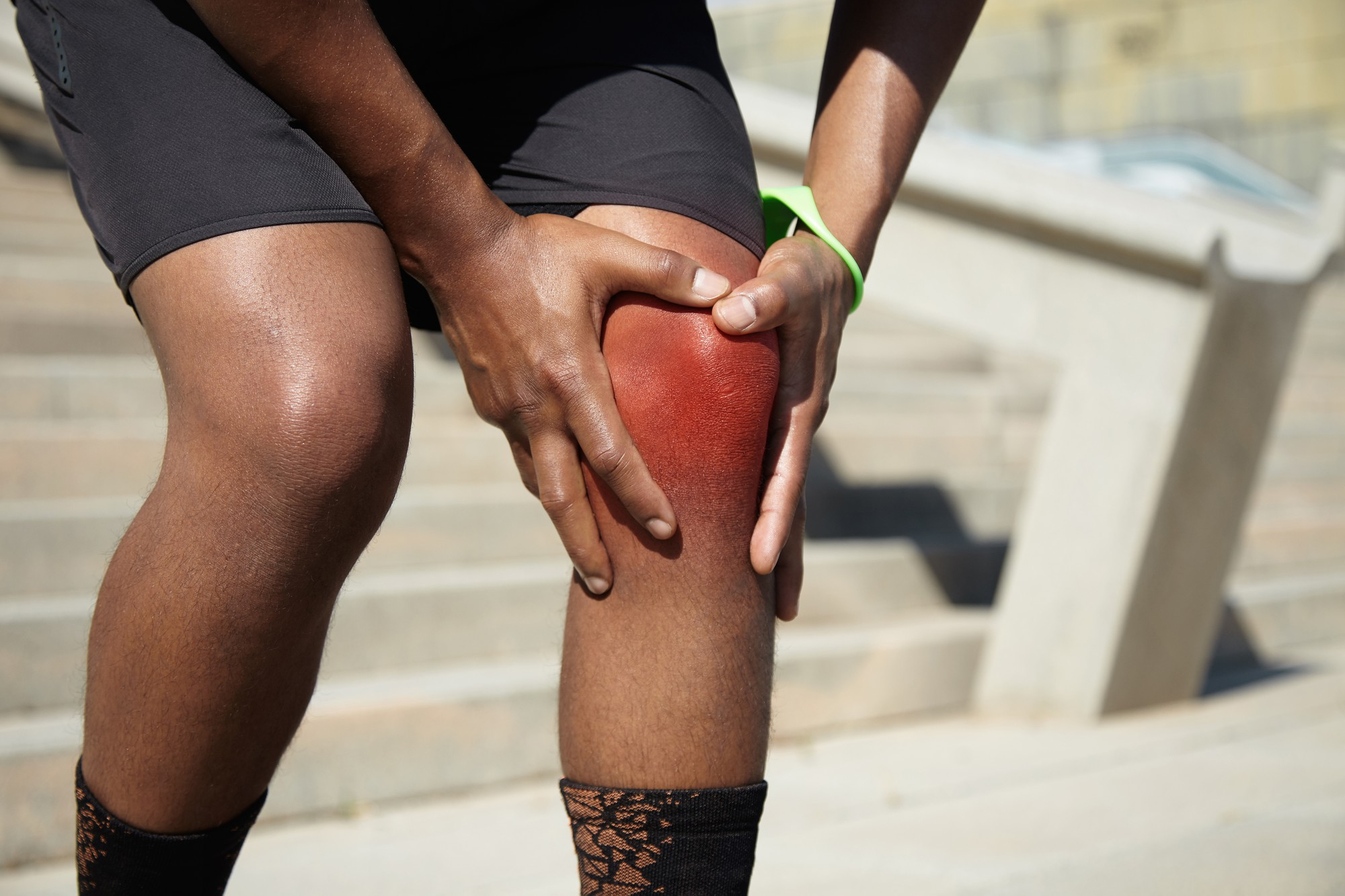Here, we are sharing information on the topic “knee pain and their treatments.” Knee pain is a relatively frequent symptom that can be brought on by anything from a short-term accident to a long-term illness like arthritis. Knee pain is typically manageable at home with rest and over-the-counter medication. If you’ve been injured or have had knee discomfort for longer than a few days in a row, see a doctor.

knee pain and their treatments
What is the meaning of knee pain?
- Any discomfort or pain in the area around your knee joint is referred to as knee pain. Your body has joints, which are the points where two bones join. Your thigh and lower leg are joined by the knee joint. It is the point where the femur, or thigh bone, joins the shin bone (tibia).
- As the largest joint in the body, the knee takes up a large portion of your weight as you move. That’s why it’s one of the most typically injured joints. Knee pain can be either a transient, short-term condition or a chronic, long-term one that requires medical evaluation and treatment.
It usually depends on whether sections or parts of your joint are affected where you have knee discomfort. You may experience pain:
- Near the surface behind or above your knee (usually an issue with your muscles, tendons, or ligaments).
- Deeper in your knee (pain that comes from your bones or cartilage).
- In various locations down your leg or knee: Sometimes, knee discomfort radiates or affects other parts of the body. One side of your body may hurt, and occasionally it may feel as though it is coming from your knee’s back. Your lower leg or thigh, which are located close to your knee, may also experience pain.
Knee discomfort may come and go. For instance, you may have pain that improves with rest when you move or bend your knee. A few individuals experience pain at different times of the day. When you first get up in the morning, you could experience more pain. Knee discomfort is also prevalent in the evening, particularly if you have been physically active during the day.
Over-the-counter (OTC) pain medications and a break from physical activity are the traditional home remedies for knee pain. See a doctor if your pain is severe enough to interfere with your everyday activities or to make it difficult for you to move.
Which conditions most frequently result in knee pain?
The following are the main causes of knee pain:
- Overuse.
- Arthritis.
- Injuries.
Overuse
Exercise, sports, physical labor, and physical activities can all put stress on your knee joint. Knee pain can result from doing repetitive motions, such as leaping frequently or performing hand and knee exercises.
Arthritis
Your joints become inflamed and painful when you have arthritis. Arthritis in the knee is frequent. It results in discomfort, edema, and rigidity.
Injuries
Pain might result from any injury that compromises your knee joint.
Treatment
The cause of your knee discomfort will determine which therapies you require. A medical professional will recommend a course of action based on the nature and intensity of the pain:
1. RICE technique for knee discomfort
The RICE approach is typically effective in treating knee pain at home:
- Rest: To prevent aggravating the injury, cease the physical activity that is causing you discomfort.
- Ice: For the first 24 hours following your accident, use an ice pack or cold compress for 15 to 20 minutes each hour. You can apply ice every three to four hours after the first day. Avoid putting ice directly on your skin (wrap the ice pack in a towel or washcloth).
- Compression: Compression helps lessen swelling and blood flow to the damaged knee. You can wrap it around your knee or apply a compression bandage. You can learn safe compression wrap application and wear techniques from a healthcare professional.
- Elevation: Maintain your knee above your heart level. You can use cushions, blankets, or pillows to elevate your knee.
2. Drugs for knee discomfort
- For the purpose of treating your knee pain and any other symptoms you may be having, your doctor may recommend taking medication.
- Most patients are able to take acetaminophen or over-the-counter NSAIDs, such as ibuprofen, aspirin, and naproxen. For more than ten days in a row, avoid taking these drugs without first consulting your doctor, especially if you have liver or renal illness.
3. braces for the knees
- Your knee is held in position and supported by a knee brace. Knee braces function by maintaining the alignment of your knee.
- Usually composed of metal or rigid plastic, they have straps that go around your leg and knee and cushions. You’ll learn from your provider what kind of brace you require and how often to wear it.
4. Physical intervention
- If you are recovering from an injury or have arthritis, your doctor may recommend physical therapy.
- You will learn stretches and exercises from a physical therapist to improve the muscles surrounding your injured knee. Both pain relief and increased stability will result from this.
5. knee replacement
- Most patients with knee discomfort won’t require surgery. However, if other therapies haven’t worked and the pain is severe, your doctor might recommend it. If you have severe arthritis, a fractured bone, or a damaged ligament, you may require surgery to treat it.
- The most popular kind of knee surgery is called a knee arthroscopy. Your surgeon will make a few small incisions (cuts) in the skin around your knee, then implant a special tool called an arthroscope into your knee joint. Your surgeon can look inside your knee and make repairs thanks to the camera and light included in the arthroscope.

Frequently asked question
(knee pain and their treatments)
1. How to fix knee pain?
Answer: The RICE approach is typically effective in treating knee pain at home: Rest: To prevent aggravating the injury, cease the physical activity that is causing you discomfort. Ice: For the first 24 hours following your accident, use an ice pack or cold compress for 15 to 20 minutes each hour. You can apply ice every three to four hours after the first day.
2. Which food is not good for knee pain?
Answer: Let’s examine some unhealthy meals that you should avoid if you have knee or joint pain:
- Sugary Foods: You should cut back if you frequently eat sweet items like cakes, chocolates, donuts, etc.
- crimson meat: The taste of red flesh is quite amazing.
- Vegetable oils: salty foods, and foods containing MSG.
3. Is walking good for knee pain?
Answer: Exercise that involves walking has several advantages, especially for older people. It relieves joint strain and enhances cardiac health, circulation, and balance. Furthermore, a recent study indicates that walking may help prevent and lessen knee discomfort associated with osteoarthritis, the most prevalent kind of arthritis.
Conclusion
(knee pain and their treatments)
In conclusion, treating knee pain involves a customized strategy based on each patient’s unique symptoms, underlying reasons, and lifestyle choices. People can effectively reduce pain, increase function, and improve their overall quality of life by combining conservative treatments, drugs, lifestyle modifications, and, if necessary, surgical interventions. Furthermore, there is promise for improved outcomes in the future as a result of continuous research into novel medicines and technological advancements that are expanding the therapy options available for knee pain.
So, this is how the topic “knee pain and their treatments” has been addressed.
- For more information related to these topics, click here.
- You may also visit our Instagram page by clicking here.
- You may also visit our YouTube channel by clicking here







[…] For more information related to these topics, click here. […]